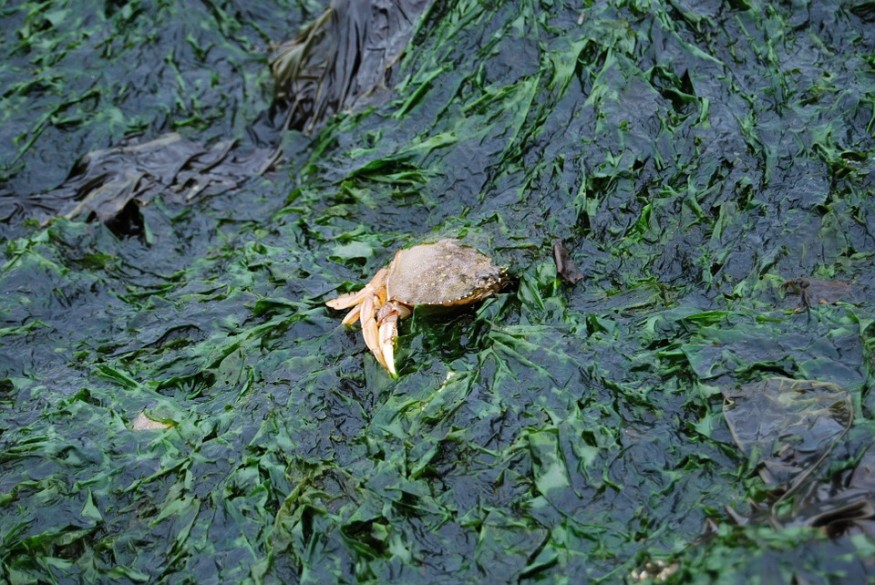The rich waters of many of the shallow coastal areas of the world's seas and oceans are shaped by seagrasses, protecting continental shelves, alleviating climate change, and providing habitats, food, and resources for various marine organisms.
It is the home of many fishes, crustaceans, and sea horses, among many others. It serves as food for waterfowl, marine mammals, and marine turtles. And it is the nursery of a staggering 20 percent of fishes all over the world.

The importance of seagrasses
According to UN Republic of Seychelles representative Ronald Jumeau in a UN report, seagrasses are mostly forgotten as an ecosystem, outshined by mangroves and attractive coral reefs. However, he says they are one of the most productive ecosystems anywhere.
Seagrasses cover approximately 116,000 sq. mi of the ocean floor in all continents except Antarctica. They are usually found no deeper than ten feet, with most species of seagrass having modest height.
Some, however, can grow to 35 feet in length, as the ribbon-like eelgrass Zostera caulescens off Japan's coastline. The seagrass species Posidonia oceanica may be the oldest organism known to us.
READ: Deep Ocean Dweller Ram's Horn Squid Caught in Video for the First Time
Ecological engineers
For thousands of years, seagrasses have actively shaped the underwater landscape. Their roots prevent sediments from eroding, and their leaves trap sediments that are floating. This improves the clarity of seawater.
Currents are slowed by seagrasses, protecting shorelines from storms. They also filter pollution efficiently, oxygenate seawater, and cycle nutrients. They trap the greenhouse gas carbon dioxide into the seafloor.
According to the UN report, seagrasses may be responsible for 18% of the ocean's carbon sequestration, even if they only occupy approximately 0.1% of the seafloor area.
Declining rapidly
Seagrass ecosystems also face rapid decline today. About 7% of seagrass areas disappear every year, just like what happens to tropical rainforests and coral reefs.
This threatens marine and terrestrial species that depend on them for shelter and food, such as endangered sea turtles, manatees, dugongs, and chinook salmons.
Causes of decline include fertilizer runoff that causes algae blooms. These blooms block sunlight needed by seagrasses for their growth. Excessive topsoil runoff caused by coastal development also causes the same damage.
Anchors of boats as well as dredging cause the uprooting of seagrasses. They also fragment and scar these habitats.
Overfishing large predators by humans disrupt the marine food chain, which lets middle-level predators wipe out small herbivores and worms, which function as cleaners of algae clinging to seagrasses.
The rise in sea temperatures also threatens seagrasses' ability to move and adapt, which exacerbates strong storms that increase in intensity and frequency. These uproot whole areas of meadows.
READ ALSO: New Discovery: Massive 500-Meter-Tall Coral Reef in Australia
Reseeding and recovering seagrasses
In the US' Eastern Seaboard and Virginia's coastal waters, Zostera marina meadows, which were eradicated during the 1930s, are now being reseeded and restored since 1999.
This effort includes scientists such as marine ecologist Robert Orth of the Virginia Institute of Marine Science. It has been going on for 21 years now, covering almost one square mile.
The effort appears to be successful, as the meadows are now rapidly spreading independently, and organisms are being attracted once again to the new habitats.
There are also efforts to assess seagrasses' conditions worldwide to create better strategies for saving them from protecting continental shelves, alleviating climate change, and providing marine organisms.
READ NEXT: Study Discovers that Elkhorn Corals Actively Fight and Resist Reef Diseases
Check out more news and information on Corals on Nature World News.
© 2025 NatureWorldNews.com All rights reserved. Do not reproduce without permission.





